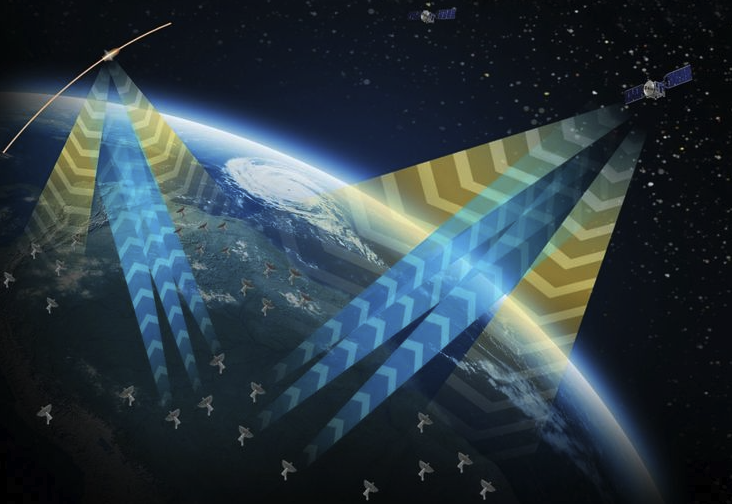Northrop Grumman Completes CDR for Deep Space Advanced Radar Capability

Deep Space Advanced Radar Capability (DARC) rendering. Photo: Northrop Grumman
Northrop Grumman said on May 30 that it has completed Critical Design Review (CDR) and a software demonstration for the planned U.S. Space Force Deep Space Advanced Radar Capability (DARC). The company said that the DARC program “now turns its focus to the factory acceptance testing of key subsystems starting later this year.”
Ground-based Space Domain Awareness systems are to include DARC, the Northrop Grumman Ground-Based Electro-Optical Deep Space Surveillance (GEODSS) System telescopes, and the $1.6 billion Space Fence radar system by Lockheed Martin. Located on Kwajalein Atoll in the Marshall Islands, the solid-state S-band radar system achieved initial operational capability on March 27, 2020.
Poor weather and cloud cover decreases GEODSS’ tracking of deep space objects at night, while DARC will provide a significantly broader view 24/7 in all weather, Northrop Grumman has said.
Johns Hopkins Applied Physics Laboratory (APL) has also worked on DARC.
White Sands Missile Range in New Mexico has been testing DARC. In February last year, Space Force awarded Northrop Grumman a $341 million contract to build the first DARC radar, which is to field in the Indo-Pacific region in 2025. In addition, Space Force may field another two DARC radars.
“We proved out the concept that DARC can actually work,” Frank Calvelli, the assistant secretary of the Air Force for space acquisitions and integration, told the House Armed Services Committee’s strategic forces panel at an Apr. 26 hearing. “And, thanks to great work by Johns Hopkins APL and those who have developed the prototype and because of that, we are building systems. We’re going to deploy them [DARCs] globally, and it’s going to be something we critically need to keep track of objects in GEO [Geostationary Orbit].”
In addition to the above systems, the SILENTBARKER satellites by the National Reconnaissance Office and Space Force are to improve the U.S. Space Surveillance Network, which includes four Northrop Grumman Geosynchronous Space Situational Awareness Program (GSSAP) satellites, launched between 2014 and 2016, and two GSSAP birds launched on Jan. 21 last year.
This story was first published by Via Satellite sister publication Defense Daily.